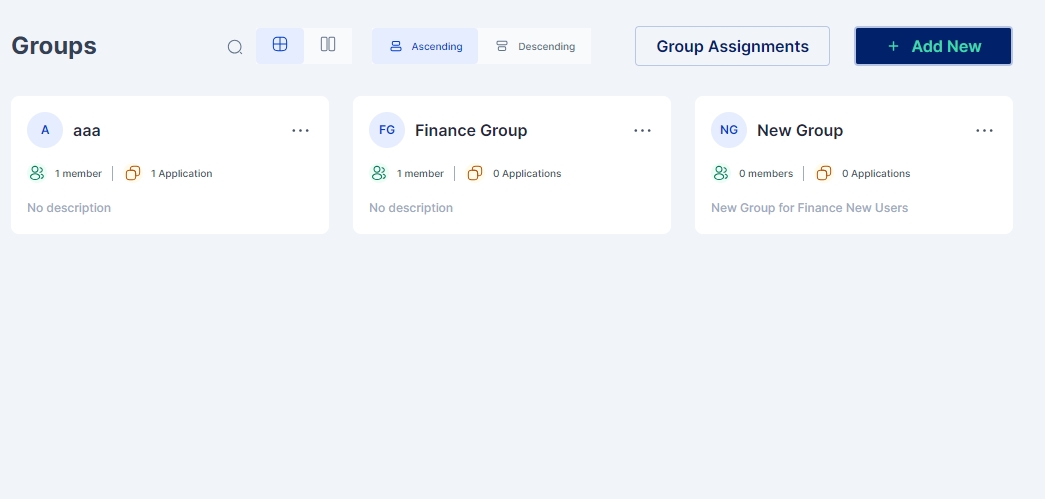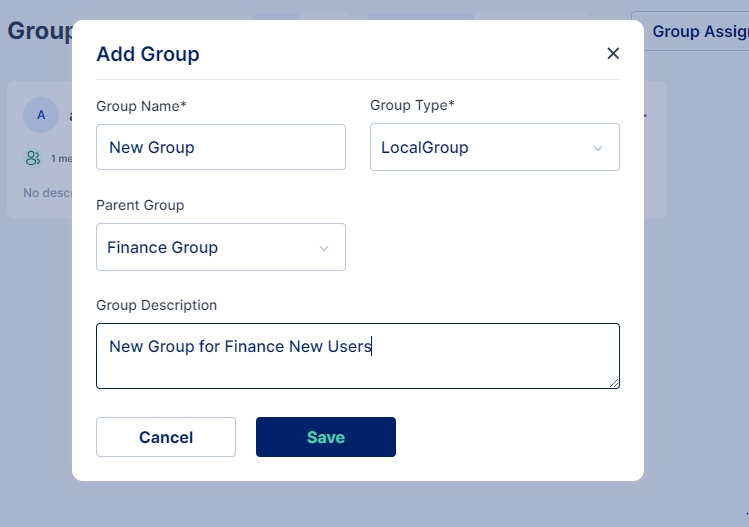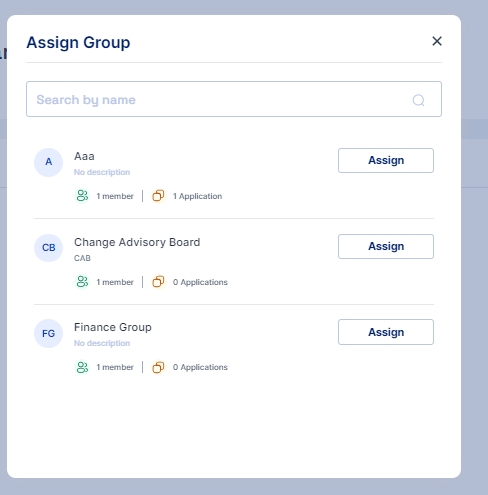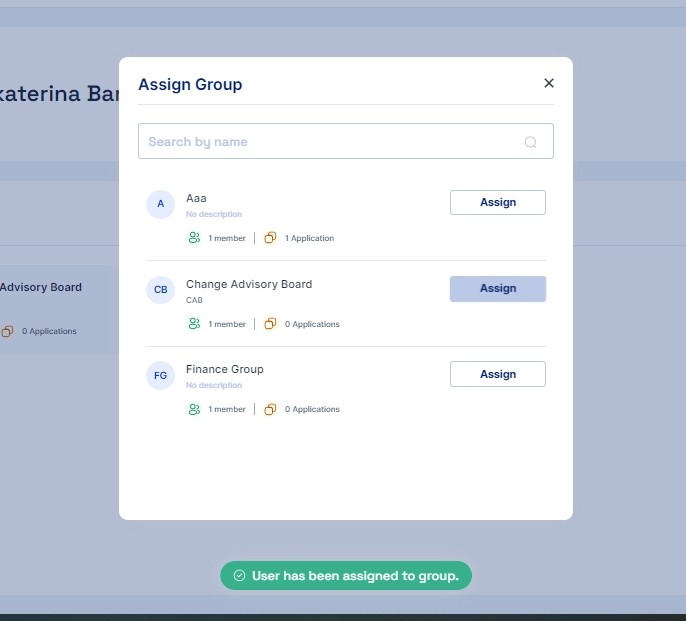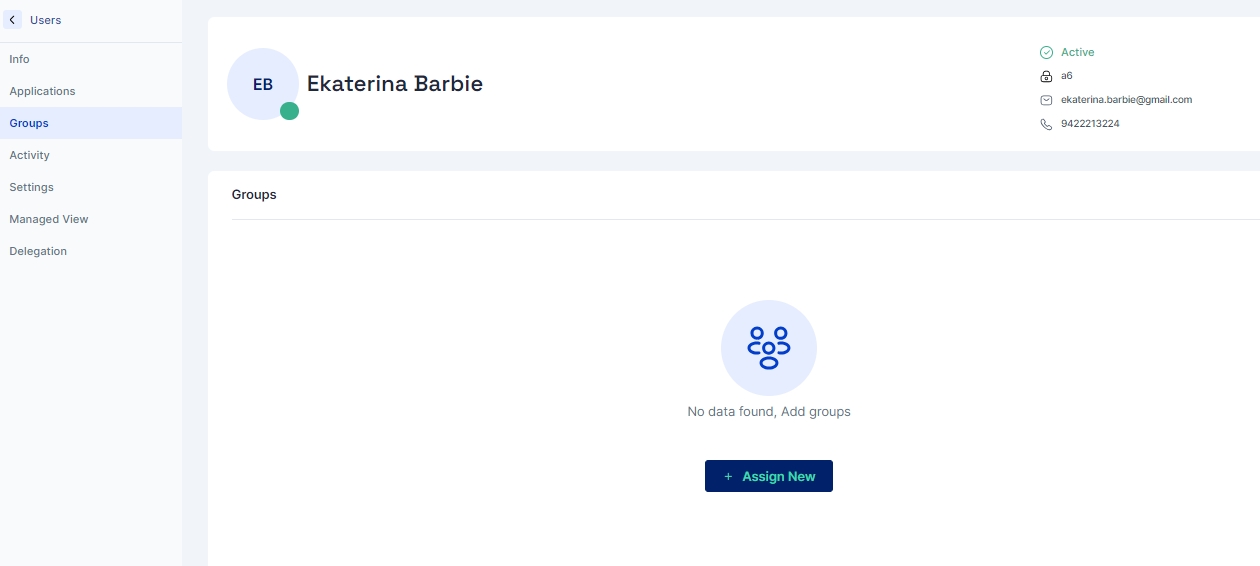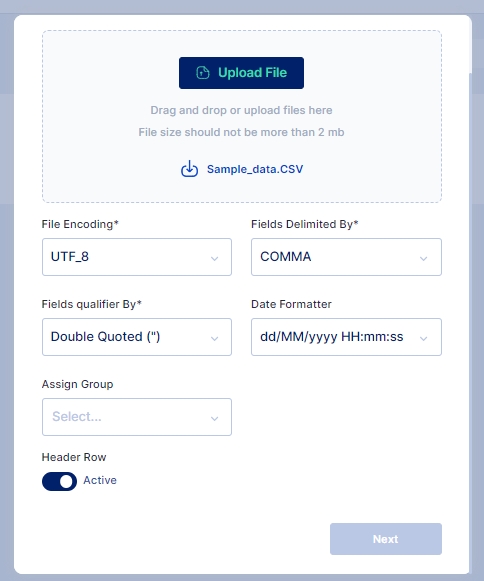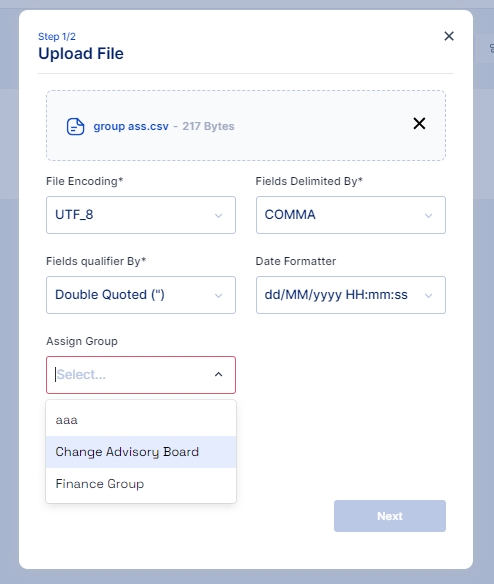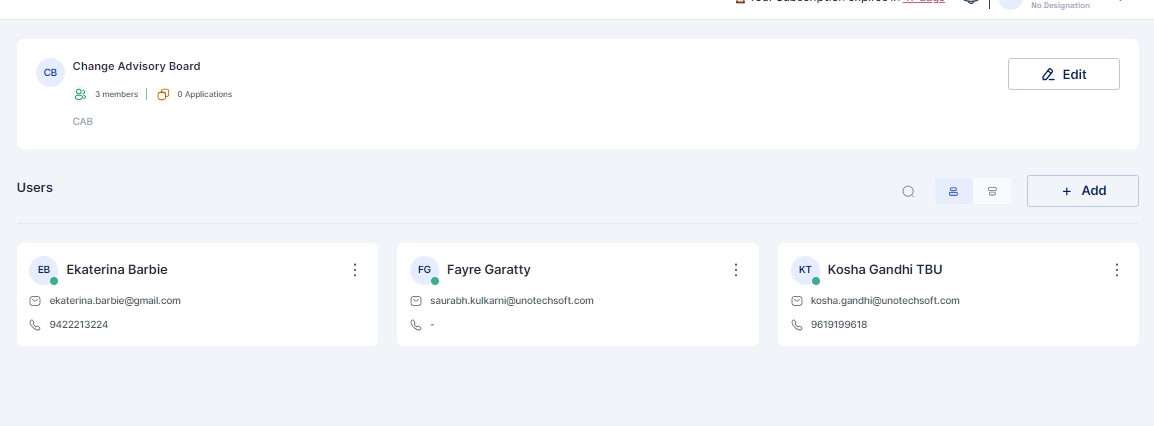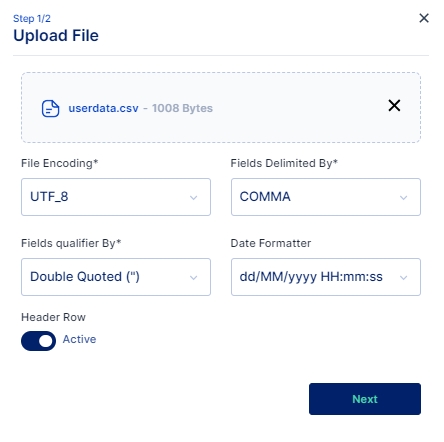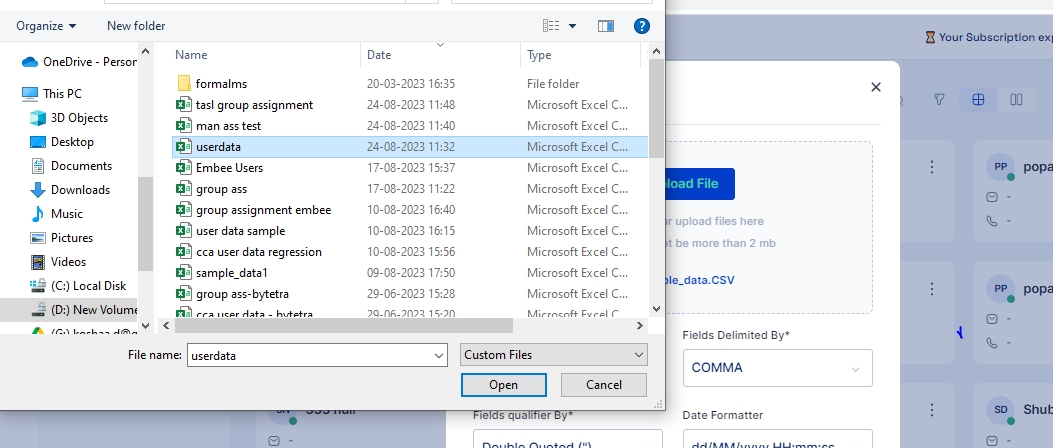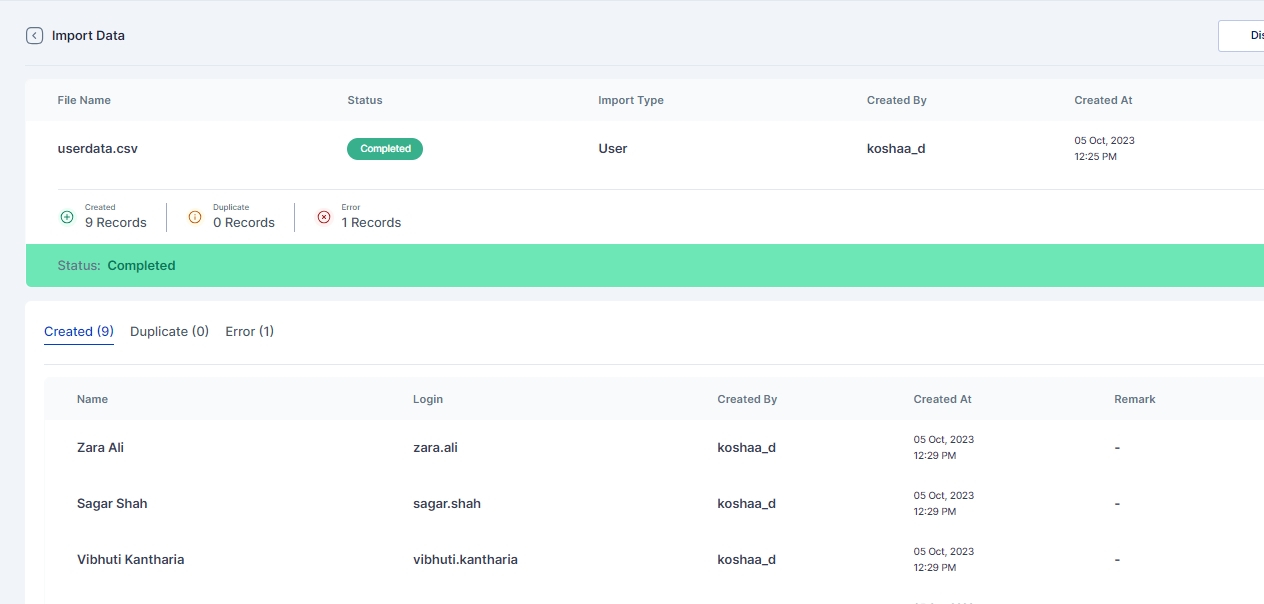
Loading...
Loading...
Loading...
Loading...
Loading...
Loading...
Loading...
For any user to be able to delegate their work to other users, the user should be added to the delegation users list; Check here how to Add Users to the delegation list so that they can delegate their activities.
Following are the steps to delegate work to an delegatee:
The logged in user needs to go to their Settings Page by clicking on the user's username on top right
Once on the Settings Page user needs click on My Delegations menu
Note: My Delegations menu will appear only if the logged in user is added to the delegation users list.Here is how to Add Users to the delegation list.
Toggle Status: Enable the Toggle Status to Active
Start Date: The date from which the user is delegate the work
End Date: The date upto which the access is delegated
Delegated To: The user (delegatee) to whom the work is delegated. This dropdown populates the list of all users to whom the task can be assigned
Excluded Applications: List of applications whose access is not provided to the delegatee
Once all the details are filled the user is expected to accept the consent to be able to configure the delegation. The consent looks something similar to as show below:
Once confirmed the user needs to click on the I agree check box and save the delegation
Once save the delegatee can see and accept the delegation in their My Delegation Page under Settings.
Delegation as a process in the Cymmetri platform refers to the ability of any end-user to delegate their responsibilities to any other end-user on the platform. As such, delegation provides the ability to the delegatee to perform various actions, including Single Sign On, Application Requests, managing workflows by providing approvals, performing Cymmetri administrative actions (if the delegator has the required permissions on the platform), among other actions. However, the login flow for the delegatee stays the same.
Access the Delegation administration panel, by clicking on the Configuration left-hand side menu item and then click on the Delegations menu item.
For any user to be able to delegate their work to other users, the user should be added to the delegation users list; To Add Users who can delegate their activities, click on the Assign New button and select one or more users to add to this list
The User and Assignee Consent sections allow organizations to align task delegation practices with their unique policies. This customizable feature empowers administrators to define specific consent texts, ensuring that both the user delegating a task and the assignee receiving it acknowledge and agree to these terms.
The user consent will be displayed whenever the delegator (user) will go to their settings in their Workspace and assign a delegation to an end-user (assignee).This consent will be recorded in the Cymmetri backend for audit logging purpose.
Similarly, the assignee consent will be recorded when the end-user (delegate/assignee) logs into the account for their manager (delegator/user).
Here's how it works:
Administrator Configuration: Administrators can craft consent texts tailored to their organization's requirements. These texts typically outline the responsibilities, expectations, and any legal or compliance aspects associated with task delegation.
User Perspective: When a user decides to delegate a task to someone else, they will be presented with the customized consent text. The user must carefully review and accept the terms before proceeding with the delegation process. This step ensures that the user is aware of the implications of task delegation and is willing to proceed.
Assignee Perspective: On the other side, the assignee who is about to receive the delegated task will also be presented with relevant consent text. They must thoroughly read and accept these terms before taking on the responsibility. This step helps establish clarity and accountability for the assignee.
While users may be imported and sychronized from other Identity providers, sometimes users may need to be added manually by the administrator.
First navigate to the User configuration page, by clicking on the Identity Hub > User menu on the left-hand side panel.
Click on the “+Add New” button.
Enter the required information and scroll down to add further information
Click on the Save button to move to the next configuration page, and copy the automatically generated password.
Optionally a group can be assigned to the user.
And also applications can be assigned to the user.
Once all the above steps are completed successfully the user is created with the assigned groups and assigned applications.
Administrator tasks pertaining to bulk users may be eased by creating groups of users.
Access the group configuration page by clicking the Identity Hub >Groups menu on the left-hand side.
Click on the “+Add New” button to start creating a new group
Group Name: Indicates name of the group.
Group Type: For environments not using Active Directory, either Local or Remote Group may be chosen, in case Active Directory is being used for synchronization in the tenant, the appropriate type according to the group policy object must be chosen.
Parent Group: If a parent group is chosen, all the policies and rules applicable to the parent group will be assigned to this new group, in addition to the policies and rules specifically applied to this new group.
Group Description: Optionally, a description may be provided to the group.
Once all the details have been entered click on Save button and a new group is created.
Users once created in the Cymmetri platform can be assigned to a group. Assigning users to a group helps ease the administrative efforts to apply the same policies and assigning applications to multiple users.
When assigning users to groups there can be various approaches which can be used:
Adding User to Group (from the Group Page)
Assigning a Group to a User (from the User's Page)
Bulk Assigning Users to a Group (Using Group Assignment on Group Page)
First the administrator needs to click on the group name and enter the configuration for the group.
Now Go to the Users Page and click on +Add button to get a list of users to add to the group
3. Now click on the assign button next to the user you wish to add to the group.
Once assigned the user can be seen on the Users page of the Group as shown below:
For this approach the Administrator needs to go to Identity Hub > User page and then select the user from the list to whom the group needs to be assigned
Go to the user's page and select the Groups menu and click on "+Assign New" button
This opens a pop up window where a list of all groups is visible
Click on the assign button and the group is assigned to the user or you may say the user becomes a part of the group
For this approach the Administrator needs to go to Identity Hub > Group page and then click on the Group Assignment button
A screen pops up that lets you select the csv file you want to upload to import the users that needs to be assigned to the group. This csv file needs to have one column that contains login id of users; Upload the csv file, you may also use the sample data file available and modify it to match your user's login id.
Once the file is selected and uploaded next you need to select the group to which you want to assign the users.
After selecting the group the column in the csv file needs to be mapped with the Cymmetri login column.
Once mapped click on the import button and the users would be mapped to the assigned group provided the login id is correct
Results of successfully Imported Users, Duplicate Users or any error that occurred during import can be see in Logs > Import History page
Users may be imported into the Cymmetri platform using the bulk Import Users feature.
For Importing Users in Cymmetri platform administrator need to click on Identity Hub > User menu and then click on the Bulk Import > Import Users button.
A screen pops up that lets you select the csv file you want to upload to import the users, Upload the csv file, you may also use the sample data file available and modify it to match your user details.
Click on the Upload File button and select the file you wish to import
Once the file is selected ensure that the default parameters select match your rewuirement else you may change these parameters as per your requirement and click on Next button.
Match the Column names from the CSV file with the Cymmetri User Attributes using this File Info dialog box.
Scroll down and click on the Import button. Note: A "Skip user workflow" check box is available to skip execution of any user workflow configured for creation of users, if not selected it may trigger user creation workflow and the process of importing users may slow down due to the numerous approvals that the approver might have to do.
Once Imported results of successfully Imported Users, Duplicate Users or any error that occurred during import can be see in Logs > Import History page
Upon receiving a delegation request, the user is notified via email and within the platform.
To view the delegated task the delegatee can go to Settings->Delegation to Me to see details about the delegated tasks and the user who has assigned the task
The user needs to click on the Accept button to accept the delegation. On click the Accept button an Assignee(delegatee) Consent is shown which the users needs to read and confirm. The Consent also shows details of the delegator and the duration of the delegation.
Once the user accepts the delegation the user sees a login button, to login into cymmetri as the delegator
On clicking the login button the delegatee is redirected to the delegator's My Workspace Dashboard.
The delegatee can access and perform actions on all the applications assigned to them and if any application is excluded during delegation they are not visible to the delegatee.























